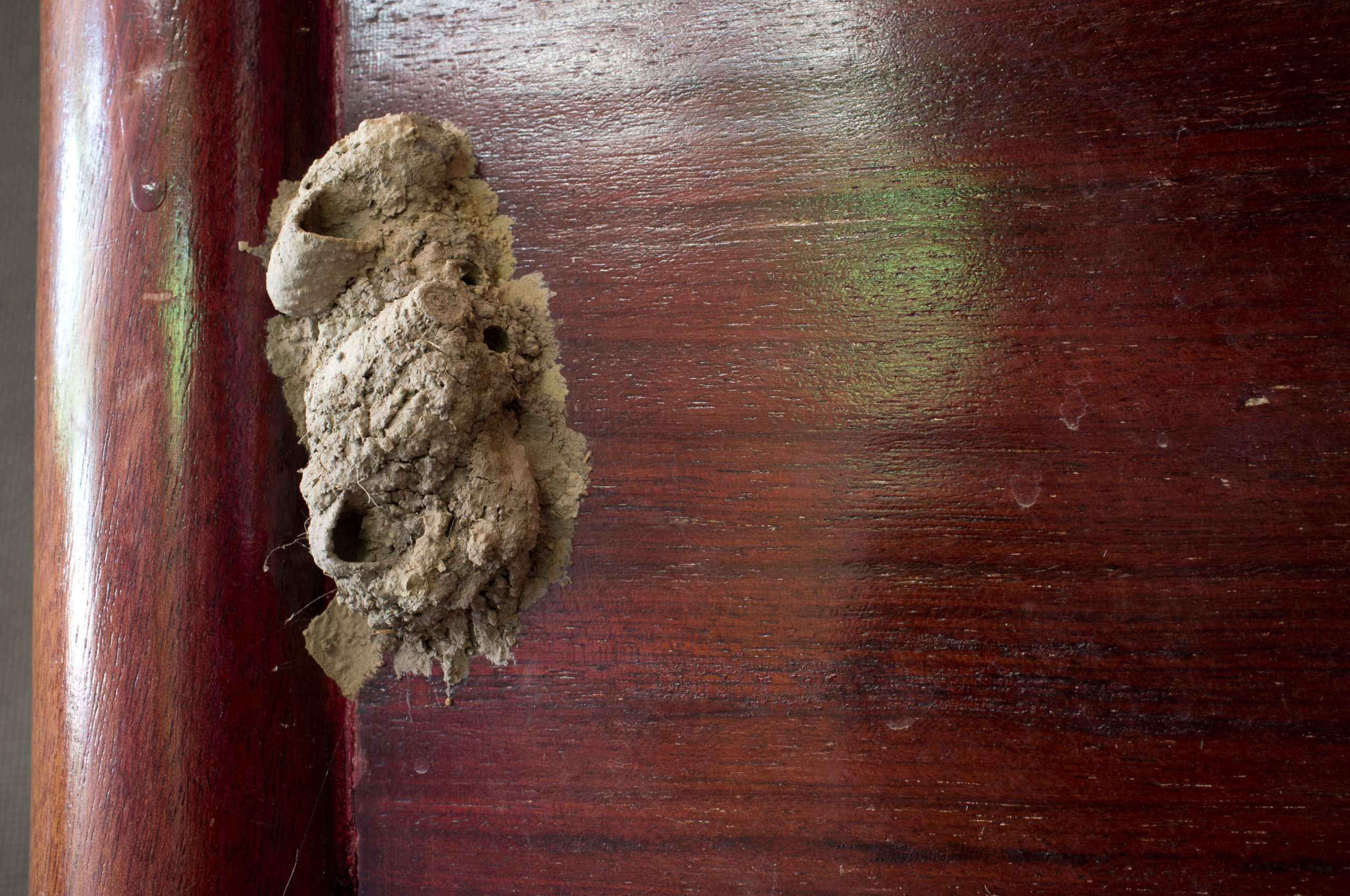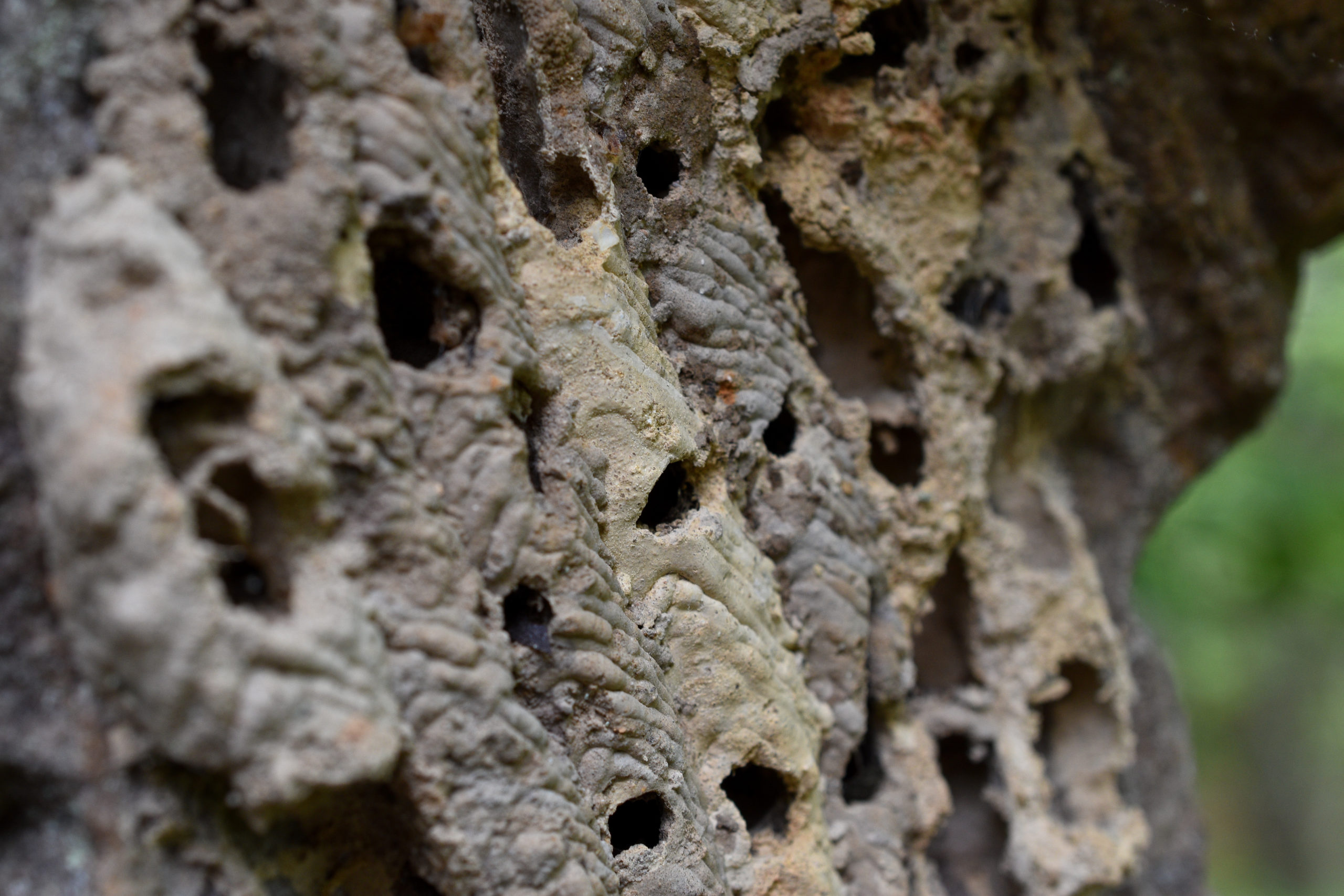Mud Daubers: Not Just a Stick in the Mud
Mud Daubers: Not Just a Stick in the Mud
There seems to be an endless amount of insects in the wasp family. Any kind of black and yellow stinging insect typically warrants a level of caution for us. We know that their stings won’t seriously harm us (unless you’re allergic), but they won’t tickle either. Each kind of wasp has varying levels of aggression, defensiveness, and level of pain that they inflict. The mud dauber is a type of wasp that is not as aggressive as its cousins, but it is common to find in backyards across America.
Mud Daubers
Mud daubers are a type of wasp that build their nests out of mud. They have all of the parts common to wasps, but they have quite a distinct look that sets them apart from your typical wasp. The mud dauber has six legs, a set of antennae, and is mostly black or dark blue with some sheen over its body. It is a long wasp, measuring about a half-inch to an inch in length, and is distinguished by its skinny segment between its thorax and abdomen. Its wings are either clear or quite dark. They go through metamorphosis inside their mud tubes, and emerge as fully grown adults. The egg, larvae, and pupae stages all happen inside the home so that they are completely protected from the outside world. Adult female mud daubers are the ones who make the mud tubes, since they need to construct them in order to safely lay the eggs inside.
Mud daubers are not typically considered to be a pest, as they do not sting humans or animals. They are not aggressive by nature, so they are very unlikely to sting anyone. The only time they would is if someone were to actually touch them or destroy an active nest. In fact, mud daubers can be beneficial because they prey on other insects, such as spiders. However, some people may still want to get rid of them because they build their nests on homes and other structures. It is important to know what a mud dauber nest looks like so that you don’t mistake it for a more dangerous wasp’s nest.
Home Life

True to their name, mud daubers live in nests made of mud. The adult female builds the mud tubes using mud that she deliberately flies up to the desired location and places where she wants it. This process can take up to an hour, depending on how fast she flies and how much mud she can carry. The nest looks like short mud tubes, about one-inch long, placed side-by-side on the surface of the wasp’s choosing. The preferred destinations of mud daubers are sheltered spots, like under or inside eaves, a porch, barns, attics, and sheds. Each generation gets a new nest site, so they have the freshest mud and food possible.
Unlike many types of wasps, mud daubers are solitary insects. They don’t live in colonies with other mud daubers or have a queen that they serve. There can be more than one nest at the same site, but each nest houses one family. This may be why they are so much less aggressive than other wasps; they aren’t defending a whole colony or hive. Mud daubers won’t really defend their own nests. They may be angry if their active nest is suddenly destroyed, but they will not attack if someone walked by the site. Their sting is not any worse than a normal wasp or bee sting, so it will not be detrimental if you do happen to get stung. However, be sure to seek medical attention if you are allergic to stings or if it gets infected.
Food
The diet of the mud dauber can make them a beneficial insect, despite their scary appearance and stingers. They mainly eat spiders, crab spiders especially, and this diet begins in the very early stages of life. The female mud dauber will actually lay her eggs on top of a spider! She will first inject paralyzing venom into the spider to demobilize it, then lay an egg on it and seal it all up with mud. Once the egg hatches, the larvae have a full meal to enjoy as soon as they wake up. This gives the larvae the necessary nutrients to develop into pupae that spins a cocoon and rests through the winter. This dramatic process must be a wild turn of events for the spider, since they are usually the ones paralyzing and eating their insect prey.
Mud daubers also eat plant nectar and honeydew from aphids, but their favorite food still seems to be spiders. Since they help keep the spider population under control, mud daubers can be considered beneficial insects. They are most active in the middle of the day, which is how they are able to build their nests to be the most durable and catch the most spiders. But mud daubers are not without their own predators. They have the typical enemies of common flying insects: larger insects, birds, reptiles, and mammals. They are typically picked off when they’re outside the nest, since the mud is very thick for another creature to try to get through.
Signs of Infestation

An old mud dauber nest
Since mud daubers aren’t aggressive and don’t seek out humans or animals to sting, they are not the worst insects to have around in the backyard. They also are not eusocial insects, so they will not bring a massive colony to their nests. The most obvious sign of a mud dauber is the sighting of a nest. An active nest is almost completely sealed by solid mud, but an old nest looks different. A deserted nest has many holes in it because mud daubers leave their nest by going straight through the mud and leaving a small hole behind. But you should still be cautious when you find a nest full of holes. Other wasps, including more aggressive wasps, like to use old mud dauber nests as their new homes. So you might start scraping a supposedly deserted nest away with current, angry wasps inside! This is why it is a good idea to call pest control and let the professionals take care of the nests. They have the proper equipment and treatments in order to safely remove the nest, with current wasps or not, and prevent future wasp invasions.
Prevention
There are not too many ways to prevent mud daubers from invading the backyard since they will go wherever there is access to mud and a sheltered spot to build the nest. And since they are not aggressive towards us, there is not a sense of urgency to remove them like there is with typical wasps. The nests are the most concerning because more dangerous wasps can move in and use it as a new home. Pest control should be called for nest removal of any kind, since our equipment and trained technicians will safely take care of the situation. Preventative treatments can also be applied so that wasps will want to stay away from your home.
One form of DIY mud dauber prevention is to seal all cracks and holes on the sides of buildings. Mud daubers seek out sheltered spots, and cracks and holes provide that extra security. These can be easily sealed with caulk, especially if the cracks aren’t too big. A bonus perk to this is that it will prevent other pests from invading since many of them love to make their way into a home through a crack or hole, like rats, mice, and roaches. Mud daubers are not the most dangerous pests in the world, but they can be a problem if their nest is close to a door or frequently accessed point of the home. Contact our team at any time to learn more about wasp and mud dauber control. We know how to remove the nests and provide preventative treatments so that pests know they aren’t welcome in your home, whether they are aggressive or not.
Citations
Mud daubers. (n.d.). Missouri Department of Conservation. Retrieved on March 24, 2022, from https://mdc.mo.gov/discover-nature/field-guide/mud-daubers
Open pipe mud daubers. (n.d.). Pest World. Retrieved on March 24, 2022, from https://www.pestworld.org/pest-guide/stinging-insects/open-pipe-mud-daubers/
Smith, P. (2008, March 13). Mud daubers. Clemson Cooperative Extension: Home & Garden Information Center. Available at https://hgic.clemson.edu/factsheet/mud-daubers/ (Accessed on March 24, 2022).
Request a Free Quote Today
(We do not share your data with anybody, and only use it for its intended purpose)


